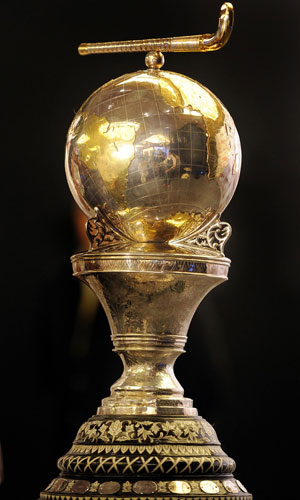World Cup Hockey
vs.
World Cup Football

For more coaching information, visit www.coachshiv.com
| January | February | March |
|
April | May | June |
|  |
|||||
| July | August | September | October | November | December | |
![]()
INTRODUCTION
Every four years there comes a time when two World Cup tournaments are held, one in the sport of hockey and one in football (soccer).
While football has been named 'The Beautiful Game' by the legend Pele, hockey, which can be both beautiful and entertaining, has become mechanical and boring. This is not a nice thing to say about hockey, but one has to be honest and sincere if we wish to improve the quality of the game.
I had a good fortune to witness the Hockey World Cup live in Delhi in February/March of this year, and the Football World Cup live in June/July of this year, albeit on television. When we talk about these 2 World Cups, it is hard to not think of doing a comparative analysis, which is presented below.
| World Cup Hockey | World Cup Football |
 |
 |
| History |
In the early 1980's, I was talking to Richard Aggiss, the coach of the Australian men's national hockey team, where he mentioned that basketball was 20 years ahead of hockey and football was 10 years ahead of hockey. In my opinion, this observation by Aggiss is still very much true today.
In the early part of this millennium, during an FIH seminar at the 2002 Kuala Lumpur men's Hockey World Cup, I heard the hockey gurus claiming that hockey was far ahead of football, and that top European football club coaches watched hockey matches to pick tactics for their club teams.
Yes, hockey had come a long way, from the grassy fields to the artificial turfs. We have advanced tremendously in some departments of the game, but we have also dipped rock bottom in some other departments of the game, which has resulted in our game becoming not so spectator friendly.
The FIH has been trying very hard to make hockey a popular spectator sport. Here are my views on what we can learn from the Football World Cup.
| Things I Liked About The Football World Cup |
Let's take the example of the young German side, which went all the way to the World Cup semi-finals, where they lost to eventual winners Spain.
It was a beauty to see them move the ball in the back 4, involving RH, RF, LF, and LH. Further, the left inner, right inner and the center half built the attack in triangles, from the right or left side, involving the respective wingers and the half-backs.
This was the way hockey was played till the 2000 Sydney Olympics, but no more now. Play build up has vanished, with almost all the teams simply bypassing the midfield. This is because hockey abolished the offside rule, resulting in the over-crowding of the defence in the front of the goal.
The football officials did not copy the hockey officials, and kept the offside rule. Thank God. Football players do not overcrowd their defensive area in front of their goals, except in the case of free kicks taken around the penalty box, and long corners.
b. The Beauty of Through Passes
The next sequence after the inners and half-backs have completed the build up, is through passes to the leading forwards. Hockey coaches and players don't emphasise play build up, and bypass the midfield completely with long shots into the circle and goal, looking for a deflection.
c. 1-on-1, 2-on-1, Give-and-Go
Play build up and through passes (a. and b. above) result in 1-on-1 and 2-on-1 situations near the opponents goal. Star players like Romario, Ronaldo and Ronaldinho capitalized on these situations to cleanly eliminate the defenders and score goals. These players were integral to the Brazil teams of 1994 and 2002 that won the World Cup.
| Things I Did Not Not Like About The Football World Cup |
This was quite apparent during the Football World Cup and we need not go into any further details. While faking of injuries was also done during the Hockey World Cup, it was to a lesser extent and done with more caution.
b. Rough Play and Bad Temper
The number of yellow cards shown to the players in the bad tempered World Cup Football final speaks volumes about this.
The Dutch received a total of 8 yellow cards, with one player - John Hetinga - receiving two yellow cards and being sent off the field for the rest of the final after the second yellow card.
Spain received 5 yellow cards in the final. The total of 13 yellow cards by both teams set a new record for the number of cards received in any World Cup Football final. This was simply disgraceful.
Dutch football legendJohan Cruyff, who is ranked alongside Pele and Maradona, described his national team's performance in the 2010 Football World Cup final thus: "It was lamentable, sad, they played dirty and deserved to be down to nine players very early. There were two Dutch tackles so ugly and dirty that they even hurt me."
Football, as played in the World Cup final, was no longer The Beautiful Game.
CONCLUSION
Both football and hockey are quite similar, in terms of number of players on the team, systems and tactics. European hockey coaches have successfully employed advanced soccer tactics to defeat formerly invincible teams like India and Pakistan. In the process, we have made significant changes in our rules, which has adversely affected the beauty and spectator appeal of hockey.
![]()